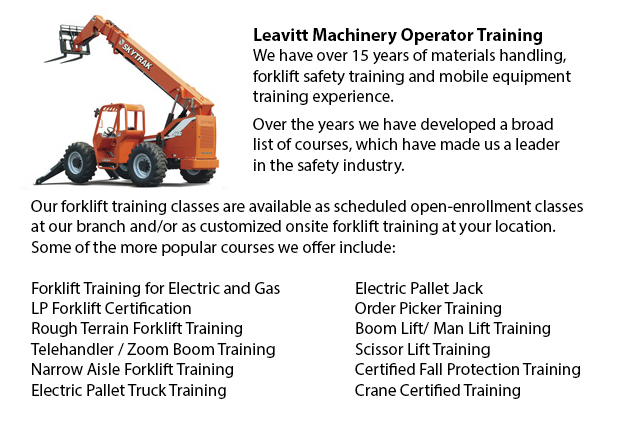
Telehandler License Red Deer - A telehandler or telescopic handler is a machine that is frequently used in industrial and agricultural applications. It has a similar appearance to a forklift and even functions in a similar manner, though, the telehandler is more of a crane than a lift truck. It has a telescopic boom that could extend upward and forwards from the motor vehicle. The boom has the capability to fit one of several accessories like a bucket, a lift table, muck grab or pallet forks.
The most common telehandler attachments are pallet tines. The telehandler is used so as to transport goods in situations where the loads cannot be transported by a conventional lift truck. Telehandlers are particularly helpful for placing loads on rooftops for example, or for removing palletized cargo from with a trailer. A lot of the jobs that a telehandler could accomplish would otherwise require a crane and this machine can be pricey, not always time efficient and not practical.
The boom acts as a lever, extending and raising while bearing a load. Even though there are rear counterweights, this could cause the telehandler to become more unstable. Hence, the greatest advantage of the telehandler is likewise its greatest limitation. As the working radius increases, the lifting capacity lessens. The working radius is defined as the distance between the center of the load and the front of the wheels.
Like for example, a telehandler with a 5000 lb capacity with the boom retracted could safely lift as little as 400 lb when it is fully extended at a low boom angle. The equivalent equipment which has a 5000 lb lift capacity and the boom retracted can support as much as 10,000 lb with the boom raised to 70 degrees. The operator has a load chart to help determine whether a specific lifting task could be done in a safe and efficient way. This particular chart takes into consideration the boom angle, the weight and height.
In order to monitor the telehandler, they come outfitted with a computer which makes use of sensors. These sensors work to alert the operator, with some being able to cut controls to certain inputs if the limits of the motor vehicle are exceeded. Several telehandler kinds are also outfitted with front outriggers which are referred to as mobile cranes. These significantly extend the lifting capacity of the apparatus while it is stationary.
-
Fall Protection Ticket Red Deer
Fall Protection Ticket Red Deer - The number one reason of death in the construction industry come from fall-related incidents. There is more possibility for fall accidents depending upon the kinds of work being done in your workplace. Therefore, kno... More -
Overhead Crane Certification Red Deer
Overhead Crane Certification Red Deer - The overhead crane certification course is a course that is designed to help trainees, even if they have language or literacy limitations. The course comprises a practical hands-on training session and a classr... More -
Wheel and Track Loader Training in Red Deer
Lift trucks are obtainable in a variety of various models which have various load capacities. Nearly all typical lift trucks utilized in warehouse settings have load capacities of 1-5 tons. Bigger scale models are utilized for heavier loads, like for... More -
Heavy Equipment Certification Red Deer
Heavy Equipment Certification Red Deer - Heavy duty vehicles are big pieces of machines which are usually known as heavy equipment. It is a broad term that literally includes whatever big utility vehicle in the area of agricultural and forestry imple... More -
Heavy Equipment Operator Classes Red Deer
Heavy Equipment Operator Classes Red Deer - A person who has the correct training to be able to use a particular kind or piece of machine is referred to as an equipment operator. There are different ways that an equipment operator can become trained... More -
Forklift Training Programs Red Deer
Forklift Training Programs Red Deer - Are you searching for a job as a driver of a forklift? Our regulatory-compliant mobile equipment operator training offers instruction in kinds of lift trucks, pre-shift check, fuel types and dealing with fuels, a... More -
Crane Safety Training Red Deer
Crane Safety Training Red Deer - Both crane driver and their supervisors must know all the potential problems related to the operation of an overhead crane. All over North America, there is legislation which provides rules for the safe inspection, ma... More -
Aerial Lift Training Red Deer
Aerial Lift Training Red Deer - An aerial work platform is a mechanized access platform. This device provides access to otherwise inaccessible places for people or equipment. Likewise called an elevating work platform or aerial device, the machinery... More

Forklift Training Red Deer
TOLL FREE: 1-888-254-6157
Red Deer, Alberta
forklifttrainingreddeer.com
Email Us
About Us


